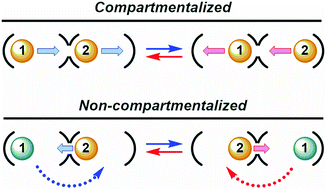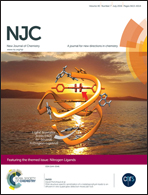Compartmentalized vs. non-compartmentalized translocations in metal porphyrin complexes
Abstract
Double translocation processes in homo- and heterobimetallic bis-strap porphyrin complexes rely on the coexistence of two different coordination modes namely out-of-plane (OOP, bound to the N-core) and hanging-atop (HAT, bound to the strap). Two different dynamics were encountered: (i) the metal ions stay on their respective side of the macrocycle while exchanging between the strap and N-core binding sites (compartmentalized process); (ii) the metal ions exchange between the two sides of the porphyrin and maintain their OOP/HAT coordination modes (non-compartmentalized process). Various stimuli were used to tune these dynamic bimetallic systems (allosteric effector, acid–base conditions, dynamic constitutional evolution, light exposure).

- This article is part of the themed collection: Nitrogen Ligands

 Please wait while we load your content...
Please wait while we load your content...